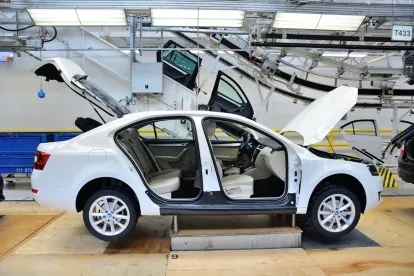Since 2008, tire pressure monitoring systems (TPMSs) have been mandatory in passenger cars, which include SUVs. As early as 2006, however, 30 percent of new passenger cars were already equipped with TPMSs. A TPMS alerts the driver if a tire is underinflated. A “telltale” or “lantern” activates on the vehicle’s dashboard display indicating that one of the tires is underinflated.
Underinflation is bad for the tire and can lead to a potentially dangerous situation. It can stress a tire beyond what it was designed to withstand, which can negatively impact the tire’s performance and lead to tire failure.
The American driving public is surprisingly ignorant concerning proper tire inflation. According to a Rubber Manufacturers Association 2016 survey, half of 1,000 people surveyed believe the maximum inflation pressure, which is listed on a tire’s sidewall, is the proper inflation pressure regardless of the vehicle that is using the tire. Proper inflation is listed on a placard located on the driver’s-side doorframe of the vehicle. The same survey indicates that 40 percent of people think visual examination of a tire is enough to determine if the tire is underinflated. Another recent study shows that only one in ten drivers ignores a TPMS telltale. So TPMS is a helpful tool to avoid underinflation.
Without question, America’s roads have been made safer through the auto manufacturers’ implementation of TPMSs in their vehicles. According to the U.S. Department of Transportation, vehicles with TPMSs, when properly used, are less likely to be involved in tire-failure-related crashes. Moreover, vehicles equipped with a TPMS system get better gas mileage and longer tire life.
However, with the added protection afforded through the implementation of a TPMS, the manufacturers are now faced with a legacy cost, and potentially greater risk exposure to product liability.
The direct TPMS, which is a sensor component inside the tire and rim assembly, has an average battery life of seven to ten years. Another indicator of whether a direct TPMS should be replaced is if the TPMS has seen between 80,000 and 100,000 miles of use. Accordingly, industry experts estimate there are 108 million vehicles in the United States closing in on the TPMS replacement “sweet spot.”
Failure to replace these first-generation direct TPMSs could result in a slew of claims and potential liability at various levels across the vehicle and tire industry. For example, a “dead” TPMS could allow for an underinflated tire to go undetected, which could lead to a vehicle crash and injuries. The vehicle-service and tire-service entity could be hit with negligence claims for failure to replace the TPMS. Vehicle, TPMS and tire manufacturers could find themselves involved in a product liability suit.
In view of this risk potential, industry players should take a proactive approach – if they haven’t already done so – to best position themselves against such claims and reduce their potential exposure. Industry players and related industry groups and associations should proactively undertake efforts to educate the driving public. The vehicle-service and tire-service industry should adopt best practices intended to determine whether their customers’ vehicles are due for TPMS replacements.



 />i
/>i
